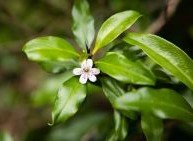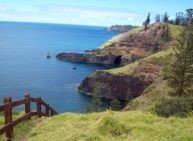History
Norfolk Island has a fascinating and multi-layered history of seafarers, convicts and mutineers.
Early settlement
Archaelogical evidence shows that the island was inhabited by Polynesian seafarers between the 13th and 15th centuries. It is still unknown why this settlement ended.
The island’s European history began when Captain James Cook visited in 1774 during his second voyage to the South Pacific.
The island was settled by the British in March 1788, just five weeks after the First Fleet arrived in Sydney. It was chosen for a settlement because Captain Cook had identified the towering Norfolk Island pines as being useful for ships masts and the local flax as good for sails.
Both plants turned out to be unsuitable for these purposes. However, the island’s fertile soil and mild climate made it ideal for agriculture and farming, and Norfolk Island was often described as ‘Sydney’s food bowl’ in the early years of the southern colony.
Convicts and free settlers made Norfolk their home until 1814, when the island was abandoned due to its perilous landing sites, isolation, and the fact that the main settlement in Australia was now well established.
A second convict settlement in 1825 began a dark period in Norfolk’s history, with the island becoming infamous around the world for the harsh treatment prisoners received. Ambitious building works and large-scale clearing for agriculture began. But when convict transportation to New South Wales stopped in the early 1850s, the settlement was wound down, with only 11 people remaining by 1855.
The Pitcairners
On 8 June 1856, the island was handed over to the Pitcairn Islanders – descendants of the infamous Bounty mutineers and their Tahitian wives. The 196 new arrivals originally lived in the convict buildings of Kingston before moving to their own 50-acre land grants, where they built homes and farms. Generally very self-sufficient, the Pitcairners grew what they required for their own needs.
Towards the turn of the 20th century, export industries such as lemon, passionfruit and banana farming were attempted. These industries, as well as forestry plantations and cattle pasture, saw even more large-scale clearing of the native forest. As a result, much of Norfolk Island has a pastoral landscape of rolling green hills instead of the original subtropical rainforest.
The descendents of the Pitcairn Islanders now make up about a half of the island’s population. The rest of the population is made up of Australian and New Zealand settlers and a small number of people from various parts of the world. The current population is about 1800, with between 400 and 800 visitors on the island at any time.
20th century history
World War II saw the construction of an airfield on Norfolk Island due to its strategic location between the Coral Sea and air force bases in Australia and New Zealand.
The airport remained after the war, encouraging higher levels of visitation and making tourism a mainstay of the island’s economy.
The first section of the Norfolk Island National Park and Botanic Garden was declared on 31 January 1986. The Phillip Island section of the park was proclaimed on 24 January 1996.
In 2018 the Norfolk Marine Park was established, providing protection for the oceanic wonders around the island.
Sign up for Norfolk News
Sign up for our monthly newsletter to receive updates about Norfolk Island National Park.






